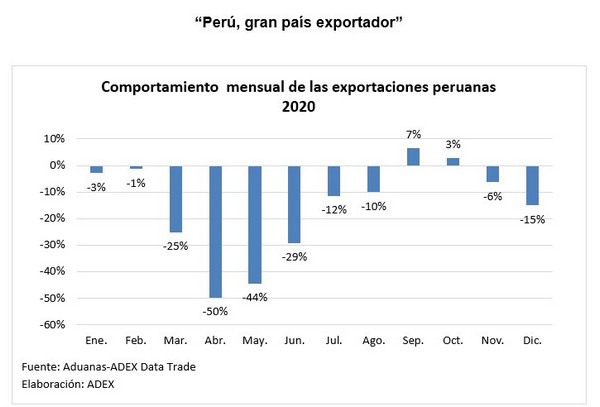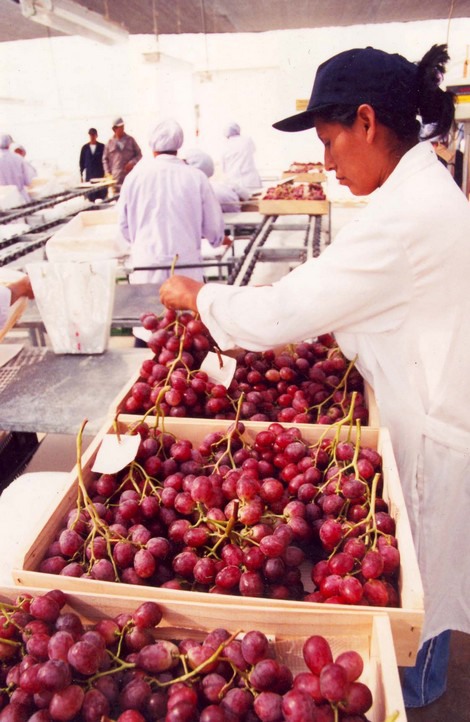Peruvian exports in 2020 totaled 39,351,154,000 dollars, i.e. 15.3% less than in 2019, a reflection of the damage caused by the pandemic and the confinement measures taken worldwide. According to the Association of Exporters (ADEX), only the agribusiness closed the year in the black.

The president of the union, Erik Fischer Llanos, said it was time to make structural changes to improve the competitiveness of the national productive apparatus. "The external outlook is complicated by the increase in COVID-19 cases, but there is a pending agenda that we must advance," he said.
“In the first months of the state of emergency, Peruvian exports were the most affected in Latin America. Moreover, the violent actions in at least three regions of the country in December not only put public health at risk but also had an effect on shipments,” Fischer stated.

Erik Fischer Llanos.
He said that shipments grew by 7% in September and 3% in October and fell by 6% in November and 15% in December. In total, traditional shipments contracted by 23% and non-traditional ones increased 5%.
“This year the panorama is not very clear due to the instability there is in the world and the changes in the Agrarian Promotion Law. Uncertainty further weakens our productive capacity, trade flows, and investments. In the right scenario, we could recover pre-crisis levels in 2022,” he estimated.
Exports
According to ADEX, traditional shipments in 2020 amounted to $ 26,457 million and fell by 19%. The most important market for the primary supply was China, which reduced its orders by 17.6%. It was followed by the US, which increased its demand by 21%, Canada (+ 3.3%), South Korea (+ 0.9%), Japan (-10%), Switzerland (-40.1%), India (- 38.5%), the United Arab Emirates (-26.3%), Germany (-27.6%), and Brazil (-55.7%).
Shipments of non-traditional products contracted by 6.7% and amounted to 12.893 billion dollars because of the fall of almost all of its subsectors, except the agricultural-agroindustrial subsector (6.839 billion dollars), which grew by 8.2%. Its main items were grapes and blueberries. They were followed by avocados, which presented a 0.26% FOB increase and a 31.4% increase in their volume.

Fresh asparagus ranked fifth with $ 385,391,000. Fresh mango ranked sixth with 290,672,000 dollars and a 23.7% increase in volume. Ecuador, Colombia, and Brazil had lower prices, which forced Peruvian businessmen to reduce prices.
The country shipped its products to a total of 169 destinations. The most important destinations were the US (3.933 billion dollars), the Netherlands (1.278 billion), and Chile (723,073,000 dollars). Spain and Ecuador completed the top five.
For more information:
ADEX
www.adexperu.org.pe










